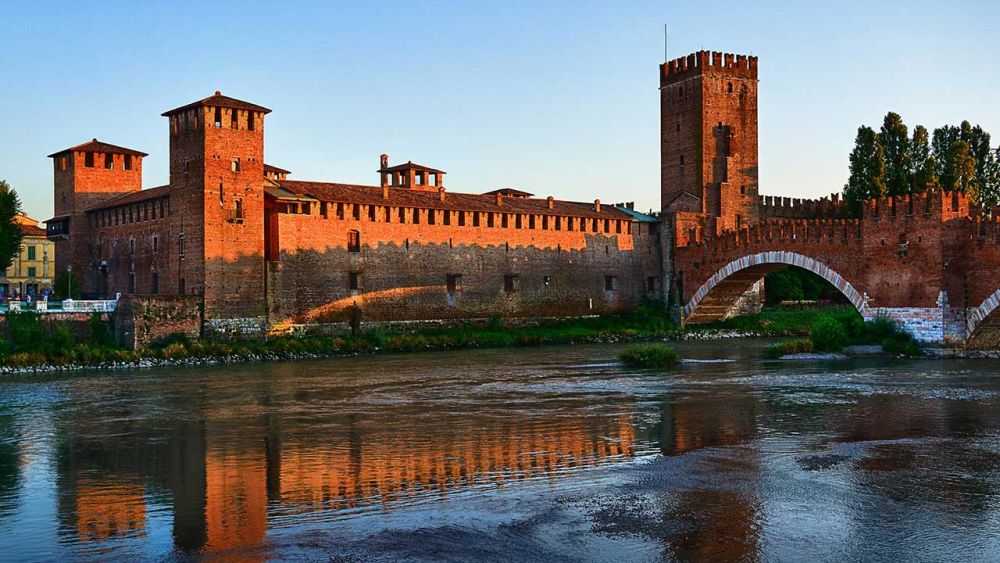

Castelvecchio, or "Old Castle," is one of the most prominent historical landmarks in Verona, Italy. With its origins dating back to the Middle Ages, Castelvecchio stands as a testament to the city's rich and tumultuous past.
Castelvecchio was constructed by the Scaligeri family who ruled Verona during the 14th century. Completed in 1354 under the rule of Cangrande II della Scala, the castle was designed as a fortified stronghold to protect the inhabitants from external threats and to assert the Scaligeri power.
Throughout the centuries, the castle has undergone numerous renovations and changes in purpose. After the end of the Scaligeri dominance, Castelvecchio served various roles—from a barracks in Napoleonic times to a military fortress under the Austro-Hungarian Empire.
The transformation of Castelvecchio into a hub for art and culture began in the 20th century, when the castle underwent extensive restorations led by renowned architect Carlo Scarpa from 1958 to 1964. Scarpa's work has been celebrated for its respect for historical structures while adding modernist elements.
Castelvecchio has been a magnet for tourists since Verona's rise as a travel destination in the 19th century, with the castle's museum housing a rich collection of art, sculptures, ancient weapons, and artifacts that illustrate the city's history.
Tourists are drawn to its impressive architecture, which includes the crenellated walls and towers, the castle's bridge, Ponte Scaligero, and the intriguing interior design by Carlo Scarpa. The castle's museum stands as one of the foremost art galleries in Verona, featuring medieval, Renaissance, and modern art.
In recent years, there has been a shift towards experiential tourism where visitors not only walk through the historic rooms but also engage with the past through interactive exhibits, guided tours, and multimedia presentations.
The trend of cultural enrichment continues to grow, with special exhibitions and events being held within the castle grounds that blend history with contemporary culture — such as art installations, theatrical performances, and concerts.
The commitment to sustainability and preservation is also evident as the city authorities and tour operators promote responsible tourism to ensure that the legacy of Castelvecchio is protected for future generations.
Castelvecchio is not just a monument of the past but a living entity that continues to evolve and inspire visitors from around the world. Its journey from a medieval fortress to a prestigious museum captures the essence of Verona's transformation through the ages.